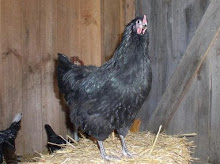In my previous post, announcing these series of articles, I mentioned one particular city in Los Angeles, California, that has recently imposed strict water regulations on homeowners because of current drought conditions in part to lack of seasonal rain.
Our case study will focus on one particular home in Encino, California, a typical California ranch style home, one story, 3 bedroom, 3 bath, 2100 square foot home. The type of house found all over the Southern California region.
Encino relies on municipal water systems and sewage systems, and these costs are compiled into a single bill along with electrical (power) costs, from the Southern California water and power Company.
So any change a homeowner can make to reduce water use and to use water more effectively in and around the home will result in true savings.
Lawns and landscapes represent one of the homes largest use of water. Evaporation during daytime watering can result in up to 30% of water waste. By controlling time of day for watering and ensuring that over watering is controlled can help to reduce waste from evaporation and unnecessary water run-off.
Smart California homeowners should take a new look at their current lawns and landscaping to ascertain what can be done to help reduce outdoor water use.
By removing the front (grass) lawns along with the wasteful sprinkler systems, and replacing with rock gardens, local indigenous plants, trees, and grasses, smart homeowners can start to reduce water use and costs without sacrificing curbside appeal.
Potted plants use less water while offering a beautiful and varied alternative to in ground landscaping. Large pots and planters also offer an easy way to grow and harvest herbs and vegetables without the digging and bending associated with home gardening.
Although Encino, and most of Southern California are in a drought from lack of rainfall, Encino usually receives about 11 inches of rain an average year per national recordings.
Based upon accepted computations that 1 inch of rain X 1000 square feel of collection surface (roof) equals approximately 637 gallons of collected rain water, the 11 inches Encino normally receives from rain equates to approximately 7,000 gallons of water.
Rainwater collected and stored can be a reservoir for irrigation of all landscaping, gardens, and potted plants, when piped for drip watering water waste from evaporation and runoff is almost totally eliminated.
Depending on local regulations some homeowners are also piping the gray water from inside the house for irrigation use also. Gray water is the water from showers and sinks, that can be filtered, collected, and used for landscaping and gardening.
Also, depending on local regulations and permit requirements, many sustainable hgome designs are including capturing rainwater for household use including drinking, cooking, and showering. Rainwater home systems require water filtering that includes both organic and metal/mineral removal and control.
Backyard landscaping and lawns normally are dependent on age and size of the family, however any reduction in grass lawns, removal of in ground plants, and the greater use of potted plants and indigenous plants, and drip irrigation will also add to the overall water savings.
Pools, especially in Southern California also represent a tremendous waste of water and money to the homeowner. Maintaining the California lifestyle is as important as saving money so any method of saving water and money that a pool owner can do is a good thing.
The most important thing in regard to a pool is controlling evaporation when not in use. Covers are not only good for pool safety, but also good for controlling pool water evaporation. A homeowner can talk to his local pool maintenance company for ideas and products.
I also believe in those technologies that will help pool owners to reduce or eliminate the use of chemicals in the pool, thus in essence turning the pool into a potential fresh water cistern for emergency use. (I will write more of water purification products shortly).
I will continue this series on water conservation, preservation, and use with us stepping into the front door of our home and doing a room by room inventory of all possible changes and projects that will offer an opportunity for better energy and water conservation methods and savings.
Please tell all interested homeowners about these series of articles. Feel free to comment, ask questions, or to offer suggestions about what has worked for you. I look forward to reading and value all input.
Brett
Wednesday, July 29, 2009
Subscribe to:
Post Comments (Atom)










No comments:
Post a Comment